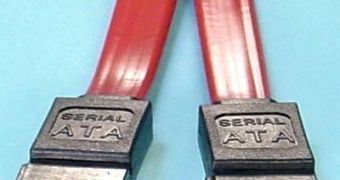Serial ATA hard disk drives and optical drives are becoming more and more popular as their price drops (now it is already equal with the price of a Parallel ATA drive). Their popularity is not only due to their now lower costs, but mainly because they offer better performance in a computer hardware segment where speed usually increases at a snail's pace. For the last decade or so, mass storage devices have always been the worst performance bottleneck inside a computer system. Even now with the new Serial ATA 2 standard, that theoretically supports 300GB/s data bandwidth, hard disk drives are still the slowest part of a computer, be it desktop, laptop or server.
Because of the more performant SATA standard that gained enough market shares, more and more hard disk drives manufacturers are seriously thinking of dropping the manufacture of ATA disk drives altogether. According to a report published by the site ITNews and cited by Arstechnica, "SATA now accounts for 66.7 percent of desktop hard drive sales, 44 percent of laptop sales, and an unspecified (but increasing) amount of enterprise storage connectivity".
This simply means that SATA has the lion's share of the storage market and it has become the main and preferred interface for primary hard drive connectivity. Even with SATA leading, the 21-year-old PATA standard is going to stay with us a little longer, as there are still many hard disk drives that use the older interface and at the same time most of the optical drives are still PATA based.
The hard disk drive manufacturing company Seagate decided to drop its entire line of products based of the PATA standard, not really overnight, but rather sooner than later. And if such a big company like Seagate decides to head in a particular direction, the rest of the hard disk drive industry might decide to follow, with the exception of Hitachi Data Systems (probably) that does certain things only in its way.

 14 DAY TRIAL //
14 DAY TRIAL //